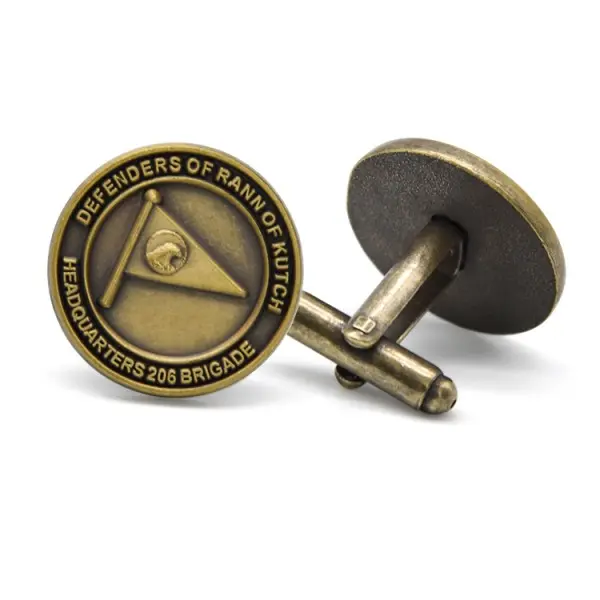Cufflinks are said to have originated in ancient Greece. It should be one of the popular men’s dressing arts in Europe from the 14th to the 17th century, that is, from the Gothic Renaissance to the Baroque period. For men who pay attention to taste, cufflinks may be the smallest decoration except for rings. Because its material is mostly made of precious metals, and some are inlaid with diamonds, gems, etc., it has been wearing the aura of nobility since its birth. Cufflinks have therefore become the only item for people to measure men’s taste, and selection, matching, and use are all a man’s knowledge.
Cufflinks require the collar of the sleeves of the shirt or suit to be rolled up and clamped. At this time, the sleeves become flat. Cufflinks are mostly used when the sleeves are loose. They are mostly used when matching suits in business occasions and are one of the accessories of business suits.
Cuffs became an important display part of shirts and gradually existed for the purpose of keeping warm after 1530. At that time, the sleeves were either folded back (the prototype of the French double fold), or a piece of cloth was attached, and then connected with a rope at the wrist (this rope later developed into a cuff chain, a close relative of cufflinks), so that the front part of the cuffs would open like a flower, and with different materials and colors, it was quite beautiful.
According to the fashion at that time, it was immoral to hide such beautiful cuffs, so the cuffs would be exposed for several centimeters from the outer clothes to fully display the beautiful cuffs. When suits and shirts came together, this rule of wearing shirts was also retained, and it became an important rule for wearing suits in the long run. Since the cuffs are exposed to show beautiful cuffs, is it necessary for modern shirts and ordinary button shirts to show them? Yes, only when cufflinks are used, the cuffs need to be exposed from the suit, showing all kinds of beautiful cufflinks to everyone.
Post time: Jun-12-2024

